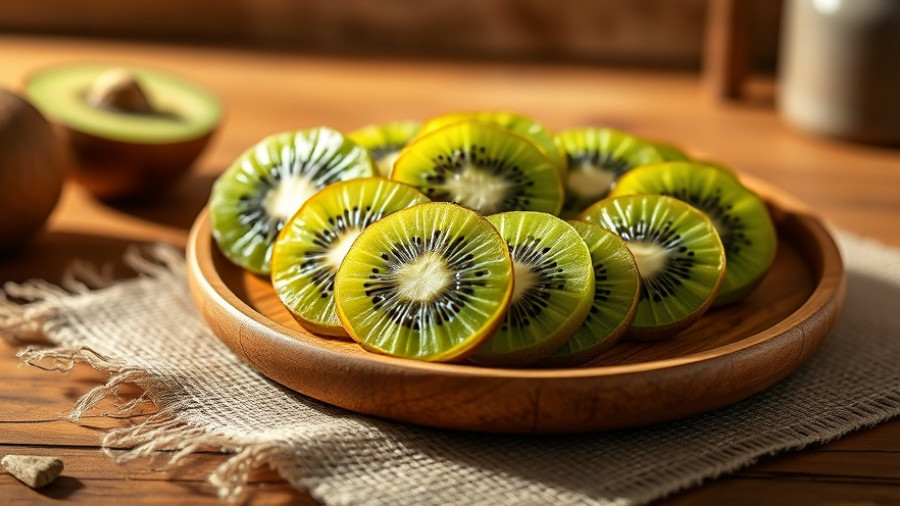
The New Approach to Easing Chronic Constipation
In a groundbreaking study, researchers at King’s College London have delivered an innovative perspective on managing chronic constipation that challenges commonly held beliefs about dietary fiber. Instead of simply recommending high-fiber diets, this new evidence-based dietary guideline places emphasis on specific foods like kiwifruit, rye bread, and mineral water, identifying them as real game-changers for those suffering from this uncomfortable and often distressing condition.
Foods That Truly Make a Difference
For years, many people have been told that loading up on fiber is the cure-all for constipation. The new guidelines, however, suggest that merely increasing fiber doesn't address the complexities of gastrointestinal health. Foods like kiwifruit are highlighted for their ability to not only promote better bowel movements but also alleviate associated symptoms, like abdominal pain and bloating. Similarly, rye bread has shown promise in increasing stool frequency, making it a worthy addition to your meals.
A Shift in Dietary Recommendations
Published in reputable journals, these dietary guidelines provide healthcare professionals with a structured yet adaptable tool to help individuals self-manage their constipation through diet. Unlike traditional recommendations that can feel overwhelming or unspecific, the new approach distills research from over 75 clinical trials into concrete, actionable advice. Among the recommendations are the inclusion of psyllium fiber, certain probiotics, and magnesium oxide, all of which have demonstrated credible benefits according to the study.
Why Previous Advice Often Falls Short
Conventional advice about fiber has often lacked scientific rigor. Many recommendations were rooted in an outdated understanding of digestion, overlooking the importance of individual responses to different foods. The King’s College researchers identified that approaches relying solely on high fiber intake or laxatives such as senna were ineffective for many, prompting a need for updated, personalized dietary interventions.
Practical Tools for Better Management
The researchers have also crafted a user-friendly tool for clinicians that emphasizes measurable outcomes—like stool frequency and consistency—allowing for tailored dietary suggestions. This level of customization is crucial in helping individuals effectively manage their symptoms, creating a pathway toward improved quality of life generational populations around the world.
Empowerment through Dietary Knowledge
This new perspective on treating chronic constipation illustrates the importance of educating patients about their dietary choices. By focusing on specific, research-backed foods and supplements, individuals can take proactive steps toward finding relief. Whether through the refreshing taste of kiwifruit or the satisfying texture of rye bread, there are now more options for managing constipation than ever before.
In a world where so many turn to questionable remedies for relief, it’s refreshing to see that science continues to shed light on effective, evidence-based solutions. As we move forward, it's essential for both patients and healthcare providers to stay abreast of these guidelines to ensure that everyone can lead healthier, more comfortable lives.
 Add Row
Add Row  Add
Add 




Write A Comment